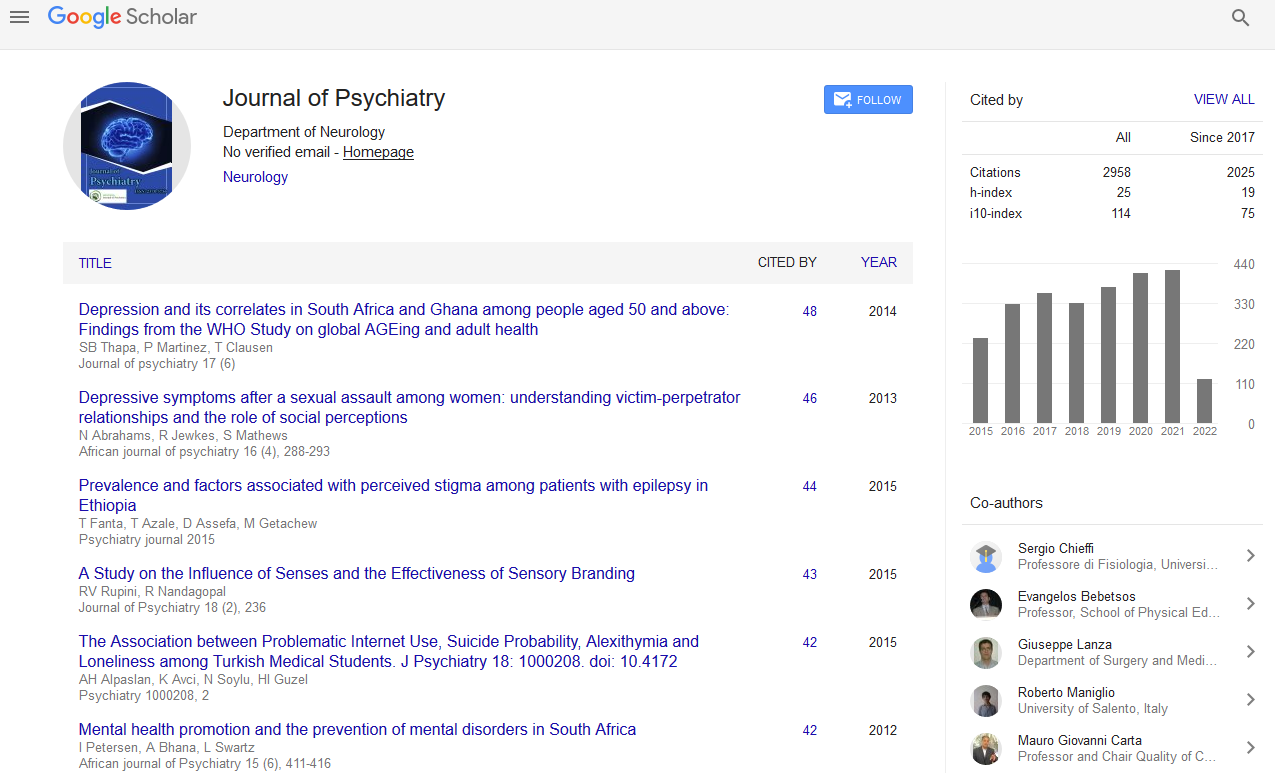PMC/PubMed Indexed Articles
Indexed In
- RefSeek
- Hamdard University
- EBSCO A-Z
- OCLC- WorldCat
- SWB online catalog
- Publons
- International committee of medical journals editors (ICMJE)
- Geneva Foundation for Medical Education and Research
Useful Links
Share This Page
Open Access Journals
- Agri and Aquaculture
- Biochemistry
- Bioinformatics & Systems Biology
- Business & Management
- Chemistry
- Clinical Sciences
- Engineering
- Food & Nutrition
- General Science
- Genetics & Molecular Biology
- Immunology & Microbiology
- Medical Sciences
- Neuroscience & Psychology
- Nursing & Health Care
- Pharmaceutical Sciences
Abstract
Prevalence and Correlates of Obesity in Childhood Autism Spectrum Disorders: A Literature Review
Background: It has been suggested that obesity and overweight in young people with autism spectrum disorder (ASD) presents a challenge to conventional weight reduction measures leading to poorer health outcomes in this population in comparison with typically developing children. In order to effectively adapt current obesity management guidelines for use in children with ASD more needs to be understood about the prevalence of overweight and obesity and the associated factors in this population. Aim: The purpose of this review is to appraise the evidence on obesity and overweight prevalence in the childhood ASD population from relevant studies selected using a computer generated database. The review explores the link between age, gender, physical activity and obesity in childhood ASD; and highlights areas for further research. The link between antipsychotic treatment and weight gain in childhood ASD is already well established and this review doesn't include an appraisal of the evidence supporting this link. Results: Compared to an obesity rate of 17% in typically developing children from the CDC’s National Health and Nutrition Examination survey (2011-2014); eight of the eleven studies included in this review reported higher obesity rates among children with ASD. Of these eight, three were only marginally higher than the NHANES prevalence. The highest rate was 30% and the lowest was 10%. Conclusion: There is a wide variation in prevalence estimates for obesity in children and adolescents with ASD, with most studies reporting prevalence rates equal to or greater than rates found in typically developing children. Several associated factors were identified but the strength of the evidence limits the value applicability of these findings. Many studies lacked a comparison group and more robust longitudinal studies are needed to ascertain strength of association and risk.


